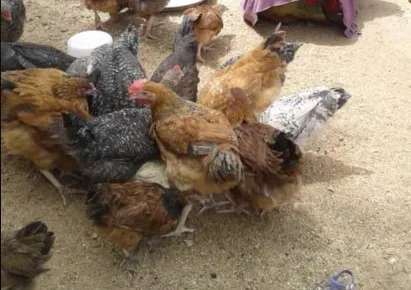Noiler Chicken Breed: History, Features & Other Facts
Many different breeds of chickens are kept as pets, for eggs, or meat. Noiler chickens (also referred to as Nuella Chicken by some) are a fairly new breed that was developed for smallholder poultry farmers. They are dual-purpose birds, meaning that they can be used for both meat and eggs. If you are thinking about getting a Noiler chicken, there are some things that you need to know first.
What is the Noiler Chicken Breed?
Noiler chicken is a new type of dual-purpose chicken breed that has been created through selective breeding. The bird is believed to be a cross between the broiler and the native chicken. This unique bird is the result of farmers looking to create a dual-purpose bird that could be used for both meat and eggs.
Read also: Poultry management: good quality drinking water
The Noilers have become popular with small-scale farmers because they are easy to raise and manage, and they are fair egg layers and grow to maturity quicker than other chicken breeds except broilers.
 Learn More
Learn MoreHistory of Noiler or Nuella Chicken
Noiler chicken breed was developed in Nigeria by Amo Farm Sieberer Hatchery Limited, popular known as Amo Hatchery. It is a dual-purpose chicken breed; that is, for meat and eggs. The genetic work started in 2003 and five years after, Noiler pure-line breeding program began. Amo Sieberer Hatchery started the commercial sales of Noiler chicks in 2014, and it is being raised in nine West African countries including Nigeria.
The breeding objective of Noiler is to provide an alternative chicken breed to the local chickens known to perform poorly in meat production, egg production and health. Noiler chickens suit all systems of production and can adjust well to poor feed or feed lower in quality.
Characteristics of Noiler Chickens
1. Appearance and Color
Noilers are covered with a variety of feather colors. These colors include black, brown, grey, gold and white and their mixes. They also have long, sharp beaks, and webbed feet. They have similar look to Kuroiler chickens and might be difficult to differentiate the two breeds, especially when they are kept together.
2. Hardiness
Noiler chickens are hardy and can adapt to harsh conditions just like the local chickens. They can scavenge for food and water just as indigenous or local chickens do. So farmers may not need to confine them in a place or manage them under an intensive system. Noilers also have an excellent survival rate that matches up with that of local chickens.
3. Broodiness
Noiler hens are not good brooders and they do not care for their chicks. So, they are not suitable for chicken breeding purposes except you hatch their fertile eggs in incubators.
4. Temperament and Eating Behavior
Noilers are active medium-sized, friendly birds that can scavenge for food. They can be kept together with other poultry birds or indigenous chickens without any problem. They are not noisy and aggressive birds and so, can be kept in the backyard without disturbing the neighbors. Due to their friendly nature, Noiler chickens can be kept in confinements and they thrive best under an intensive system where their movements are very limited. They are good foragers and enjoy leaves and seeds in gardens. Hence, they could be raised organically.
5. Body Weight
It has been scientifically proven that Noilers produce more meat and have body weights that double that of local chickens within a short time. Noiler roosters can weigh between 2-2.5kg in 14 weeks while Noiler hens can weigh between 1-1.3 kg in 14 weeks. As Noiler hens are mostly bred for egg-laying purposes, the roosters are usually sold or slaughtered when they reach 14 weeks of age.
6. Egg Laying
Noiler hens start laying eggs at 20-22 weeks of age. Their eggs are medium in size and light brown. The average Noiler hen can lay around 140-160 eggs per cycle.
7. Health and Disease Resistance
Noilers have less susceptibility to diseases and lower maintenance levels when compared to other breeds of chickens. They are hardy and can tolerate different climatic conditions.
8. Feeding
Noilers can be fed with self-prepared or commercial poultry feed. They can also eat kitchen scraps, leftovers or grains and could scavenge for food and water in the open environment. So, there is no need to confine them to a specific place.
9. Ease of management
Noiler chickens are easier to raise and manage than other exotic chicken breeds.
Read also: The health benefits of iodine for chicken
Disadvantages of Noiler Chickens
Noiler chickens are a medium-performing dual chicken breed for eggs and meat, but they also have some features that make the breed unsuitable for serious commercial poultry farming.
The egg production per cycle is very low compared to commercial chicken breeds for eggs.
It attains maturity late and takes longer to reach reasonable market weight, unlike broilers that are ready for market in 5-6 weeks.
The breed developer targets village and smallholder farmers and not big, commercial farms.
Performance is poor if managed under the free-range system and when fed with just kitchen wastes and left-over.
They are never a close alternative to broilers when it comes to raising meat birds.
Noiler hens are not good brooders and can’t care well for chicken.
For more information and updates join our WhatsApp group HERE
Follow us on Twitter Here











